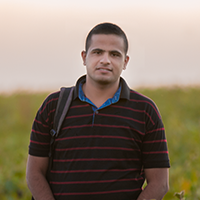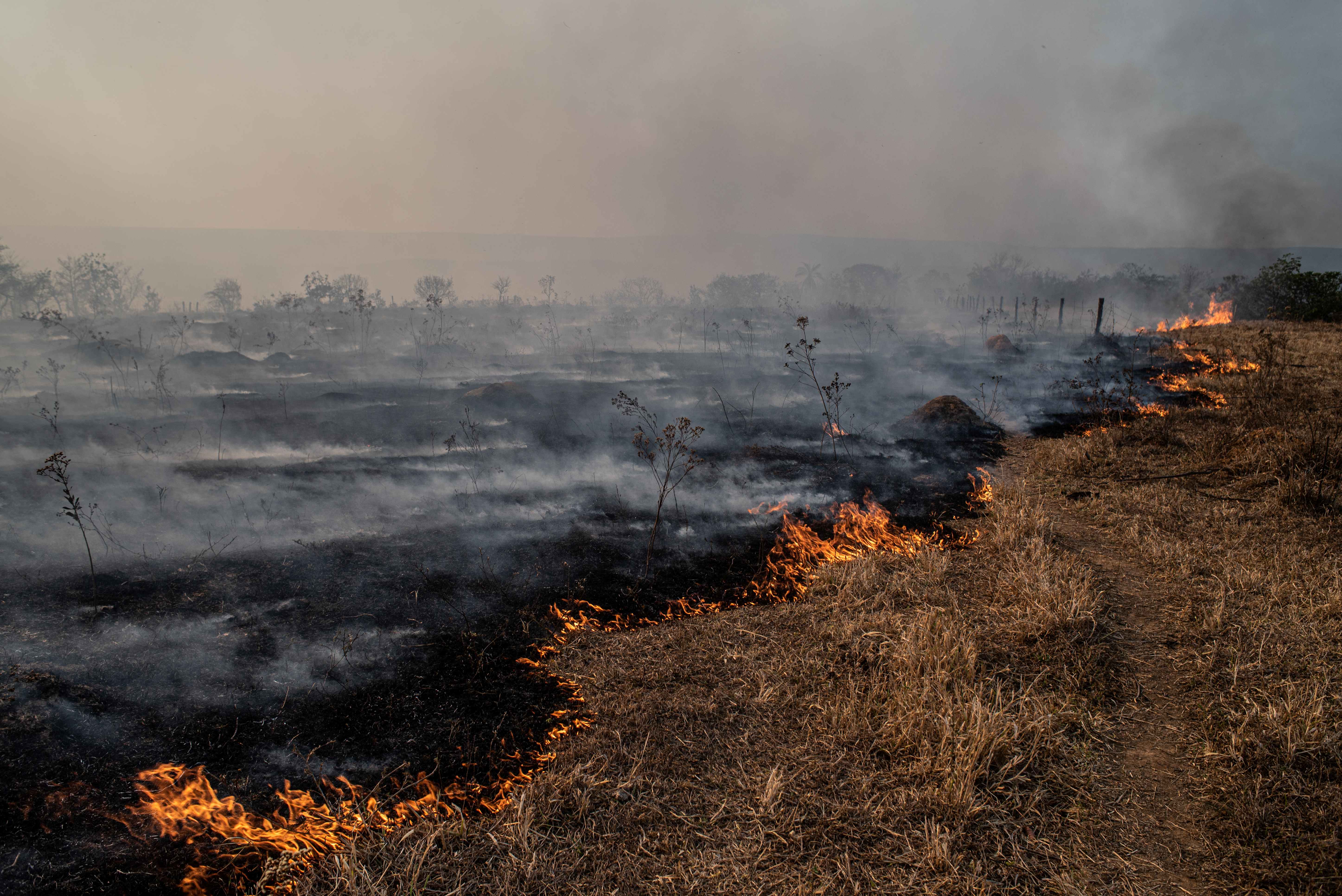ساعاتٌ طويلة قضاها الصحفي الفلسطيني أمجد عباس (28 عاما) في إعداد قصةٍ إنسانية تروي حكاية طفلٍ بعمر العشر سنوات استشهد خلال مشاركته في مسيرات العودة الكبرى، لصالح موقعٍ محلي يراسله.
أثناء سرده لتفاصيل القصّة، حرص عباس على ذكر كلّ ما من شأنه أن يحرك مشاعر القراء إزاء قضية الأطفال -ضحايا رصاص الاحتلال- في قطاع غزة المحاصر منذ أكثر من 12 عاما، بل ويدمجهم ضمن معايشةٍ حيّة مع تفاصيل حياة الطفل الشهيد التي كانت تفتقر إلى أقل مقومات العيش البسيطة.
الصحفي الشابّ الذي يعمل بنظام "القطعة" لدى عدد من المؤسسات الصحفية المحلية والدولية، أكد أنه عرض قصته تلك على عدد من المتخصصين في كتابة القصة الصحفية من باب الشورى والتأكد قبل أن تصل إلى يد المحرر المسؤول، وذلك "حتى تخرج متقنةً وموافقة لمعايير الكتابة المهنية السليمة".
نُشِرت القصة، وكانت المفاجأة؛ اسمه على مادةٍ مختلفة، النمط الوصفي التسلسلي فيها تحول إلى آخر إخباري جاف يتحدث عن استشهاد طفل ووقوع عدد من الإصابات فقط!
أثار ما حدث غضب عباس "اتصلتُ فورا بالمحرر وسألته عن سبب هذا التغيير، وأوضحت له أنني كتبت عشرات القصص لمنصات أجنبية بلغاتٍ متعددة، بالإضافة إلى عشرات القصص الأخرى لمنصات عربية ومحلية ولم أجد هذا التبديل والتغيير"، فكان جوابه "كموقع محلي نحن نفضل الطابع الإخباري التقليدي بسبب تسارع الأحداث على الساحة الفلسطينية، فالقارئ -حسب رأيي- ينتظر المرور على وجبة سريعة ودسمة من الأخبار، ولا يهمه أبداً أن يقرأ عبارات التعاطف والوصف".
ليست حالة عباس الأولى من نوعها في قطاع غزة، فالمسؤولون عن النشر كثيراً ما يحبطون طموحات الصحفيين الشباب، خاصة عندما يتعلق الأمر بكتابة القصة الصحفية، لأسباب عدة، أهمها: عدم إدراك وسائل الإعلام المحلية لأهمية هذا الفن في مجاراة الحيوية التي تقدمها الإذاعة عبر الصوت والتأثيرات الموسيقية المختلفة، والتلفاز عبر الصورة وما يرافقها من صوت وحركة وتأثيرات حسية وجسدية.
تجارب من القطاع
برأي كاتبة القصص الإنسانية والمدربة في مجال التحرير الصحفي آلاء أبو عيشة، فإن "الرهان على استمرار الصحافة المكتوبة في قطاع غزة وخاصة الصحف، يرتبط بمدى قدرتها على اختلاق أنماط جديدة للقارئ المهتم، فتعوّضه أثناء القراءة عن سماع الصوت أو رؤية الحركة عبر صورة، بل وتخطف خياله إلى حيث وقع الحدَث من خلال الوصف، سواء للزمان أو المكان أو حتى لملامح الأشخاص ولغة أجسادهم".
وتلفت الانتباه إلى أن عدد القادرين على كتابة فن القصة الصحفية في قطاع غزة محدود لعدة أسباب، أولها التعليم الجامعي الذي يعتبر تقليدياً، إذ لا يزال حتى الآن يدرّس الطلاب مبادئ صحافة الثمانينيات، القائمة على الهرم المقلوب، الخبر والحوارات الإخبارية وتقارير اليوميات السريعة التي تعتمد على كتابة المقدمات التلخيصية والعناوين الإخبارية والاقتباسات فقط، إضافة إلى ضعف اللغة العربية لدى عددٍ كبير من خريجي كليات الإعلام.
وبحسب آلاء، تعتمد القصة في كتابتها على جانبين في الصحفي لا غنى لأحدهما عن الآخر، "يتعلق أولهما بمهاراته الأدائية، أي قدراته اللغوية، والتحريرية، وقدرته على ترتيب المادة تبعاً لتسلسل زمني منطقي وسليم، بينما يتعلق الثاني بحواسه الخلقية (الحواس الخمس) التي ستجعل حسابا لكل حركة، ورائحة، وشكل، وموقف، وصوت".
وتضيف الصحفية الحاصلة على جائزة الصحافة العربية عن فئة الشباب للعام 2016، أن كاتب القصة الصحفية "يتحرر من الإجابة عن الأسئلة الستة في مقدمة قصته، على عكس صحفي التغطيات الإخبارية، وهذا ما يبرر استخدام قالب الهرم المزدوج/الماسة/الساعة الرملية، لكونها في النهاية مادة إخبارية تحمل معلومة وتعبر عن حدث، لكن بطريقة إبداعية دون إفراط في الوصف وعبارات الأدب على حساب المعلومة".
وتشير إلى أن أي قصة صحفية ناجحة يجب أن تتوفر فيها مجموعة من العناصر، أهمها المعايشة "إذ لا يمكن كتابة قصة سمعتها من صديق"، والحيوية "التي تضفيها عبارات الوصف للزمان والمكان والأشخاص"، إضافة إلى الشمولية والتكامل "اللذين يقدمان المادة الصحفية وفق تسلسل زمني منطقي لا يترك لدى القارئ أي علامة استفهام حول تناقض بين أول القصة وآخرها".
وتضيف آلاء أن عدداً كبيراً من الصحفيين في قطاع غزة لم يتعرفوا إلى علمٍ حقيقيٍ كامل يحكي لهم كيف يمكن أن يكتبوا قصة! لكن المؤكد أن "القصة الصحفية تتكون من ثلاثة أجزاء لكل جزء خصوصيته في الكتابة والأسلوب والربط (المقدمة والجسم والخاتمة)".
المقدمة برأيها تقع على عاتقها مهمة إقناع القارئ بأن المادة تستحق القراءة، تقتنص مشاهد متحركة يرصدها القلم فيعيش القارئ ظروفها، يسمع ما يدور فيها من حوار، يضحك لابتسامة البطل ويبكي لغصته، ولا تبدأ أبداً بلغة التلخيص. أما الجسم أو المتن فلا يتحول أسلوبه بعد المقدمة إلى "قال وأكد وأضاف"، وهذا فخ يقع فيه كثيرون ممن يحاولون كتابة القصة الصحفية في غزة. أما الخاتمة فهي ليست جزءًا استهلاكيا في القصة كما هو حالها في الخبر، أي لا يمكن الاستغناء عنه وإلا كانت قصة مبتورة كرواية بلا نهاية تماما.
وتشير إلى أن "بعض الصحفيين تمكنوا عبر محاولات كتابة ناجحة؛ من تحريك الرأي العام المحلي والعربي والدولي".
معرفة التفاصيل
من جهته، يرى الصحفي في جريدة "الأيام" المحلية فايز أبو عون أن طبيعة الحالة المحلية الفلسطينية هي التي تفرض تهميشاً لفنون الكتابة الصحفية الإبداعية غير الخبر والتقارير السريعة، وفي بعض الأحيان المقالات التحليلية، مبيناً أن هذه الفنون المستهلكة تستنزف مجمل مساحة النشر لا سيما في الصحف، فتؤدي إلى غياب الأشكال الأخرى مثل القصص الصحفية والتحقيقات الضخمة.
ويقول إن "الصحافة الفلسطينية تقع في خطأ كبير حينما تفضل فنًّا على آخر، لأن قضيتنا زاخرة بالتفاصيل والمشاهد التي يمكن أن تقلب موازين الرأي العام العالمي ليصبح سنداً للضحية الحقيقية، لا للضحية التي يصورها الاحتلال له"، مضيفاً أن "القصة في فلسطين فن غير شائع لا يكتبه إلا عدد محدود من الصحفيين لأنها ليست سهلة وتحتاج لمهارات أدبية وبلاغية، إلى جانب القدرات الصحفية. كما أن تسارع التطور في عالم الصورة والوسائط المتعددة تسبَّب أيضاً في غياب هذا الفن وانحساره في الصحافة الفلسطينية".
"نحن بحاجة لمعرفة تفاصيل أكثر عن حياة الشهداء وما سبّبه غيابهم لذويهم من حسرةٍ وألم، وبحاجة لأن نعرف أكثر عن حكايات الثائرين والفنانين والمبدعين" يقول أبو عون، مشيراً إلى أن ذلك "يحتاج أن نتطلع أكثر إلى فن القصة المكتوبة، ونحاول قدر المستطاع في عملية دمجه أكثر ضمن الفنون الصحفية الأخرى".
بدورها، ترى الصحفية هند الخضري التي تكتب قصصاً لصالح عدد من المنصات الأجنبية، أنّ أول ما يجب مراعاته عند كتابة القصص الإنسانية الموجهة للمجتمع الغربي، هو طبيعة القارئ الأجنبي الذي لا يعرف في الغالب عن الحياة في فلسطين سوى مشاهد العنف والقتل والدمار، وكذلك البساطة في المفردات والتراكيب اللغوية التي تنقل الحقائق بشكلٍ مجرد دون أيّ إضافاتٍ أو تغيير في الجوهر.
وتوضح أنّه يمكن للصحفي أن يكتب مقالاً في أي موضوع يشاء من أي مكان في العالم، كما يمكنه إعداد التقرير السردي من خلال إجراء المقابلات عبر وسائل الاتصال التقنية، لكنّه لن يستطيع فعل ذلك عند كتابة القصة الصحفية، لأنّ الأمر باختصار قائم في أساسه على المعايشة والوصف وتوظيف الحواس الخمس في نقل الصورة، "لذلك يقع على الصحفيين الفلسطينيين مهمة أكبر، لأنّهم أبناء القضية والأحق بنقل قصصها إلى العالم".
وتشير هند إلى أنّ الضعف الملحوظ في قدرة الصحفيين الفلسطينيين على كتابة القصص للمؤسسات الأجنبية، يجبر الأخيرة على انتداب صحفيين من خارج البلاد لأجل التغطيات وإعداد المواضيع المختلفة، الأمر الذي يشكل خطراً على الرواية الفلسطينية ويضعفها بشكل كبير، لأنّ الصحفي الأجنبي في غالب الأحيان لا يملك المعرفة الكافية التي تؤهله لنقل الصورة في فلسطين بأبعادها المختلفة.
"كصحفية أكتب للإعلام الأجنبي منذ فترة.. أصبح لديّ قاعدة ثابتة أنّ كلّ قصة تخرج من فلسطين للمجتمع الغربي، يجب أن تتضمن تفاصيل وافية عن طبيعة الصراع الفلسطيني الإسرائيلي، إضافة إلى ضرورة التذكير على الدوام من خلالها بالمعاناة الشاملة التي يعاني منها الشعب الفلسطيني"، مشيرة إلى أنها تعتبر القصص الإنسانية فرصة متجددة لتثبيت الرواية الفلسطينية في أوساط شعوب العالم، التي أصبحت الرواية الإسرائيلية تشكل جزءاً كبيراً من فهمها لطبيعة الصراع.
وتشدّد على ضرورة إسناد التفاصيل الواردة في القصص الصحفية التي تشرح أشكال الظلم الذي يتعرض له الشعب الفلسطيني، بما يتلاءم معها من النصوص والمواد الواردة في القوانين الدولية والمواثيق الخاصّة بحقوق الإنسان، لأن ذلك يدعم الرواية الفلسطينية ويجعلها أكثر قبولاً ورواجاً بين القراء.
"لا توجد مقارنة أبدًا بين القصة الصحفية التي تعالج واقعًا فلسطينيًّا؛ المكتوبة باللغة العربية والأخرى المكتوبة باللغة الإنجليزية، فالأولى تحتوي على تفاصيل ومصطلحات ثورية وشعبية وجماهيرية لا يمكن أبدًا ذكرها في الإعلام الأجنبي، لأنه ببساطة يمكن تفسيرها على أنّها دعوات للإرهاب والقتل" تقول هند، مضيفة "لذلك يجوز لنا ترجمة القصص من الإنجليزية إلى العربية، لكنّ لا يمكننا فعل العكس".
وتذكر هند أنه يجب على الصحفي الراغب في الخروج بقصة صحفية فلسطينية مؤثرة، اختيار الوسيلة التي ينشر فيها بعناية، وعليه أن يبحث في مرجعيتها وسياستها جيدًا حتى لا يتفاجأ بقصصه تستغل بشكلٍ مضاد. كما عليه أن يحافظ على شغفه في الكتابة وتركيزه باتجاه نصرة قضايا وطنه ونشرها للعالم بصورتها الصحيحة. وأيضًا يجب أن يكون واعيًا لكل كلمة يكتبها في قصته، لأنه يمكن أن يستغلها آخرون ضده في يوم ما.








































